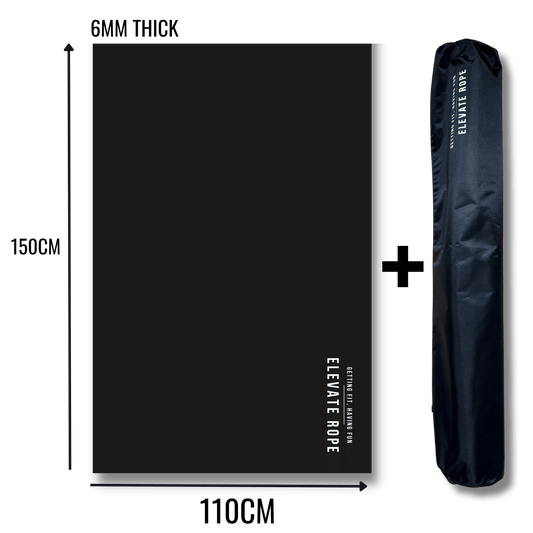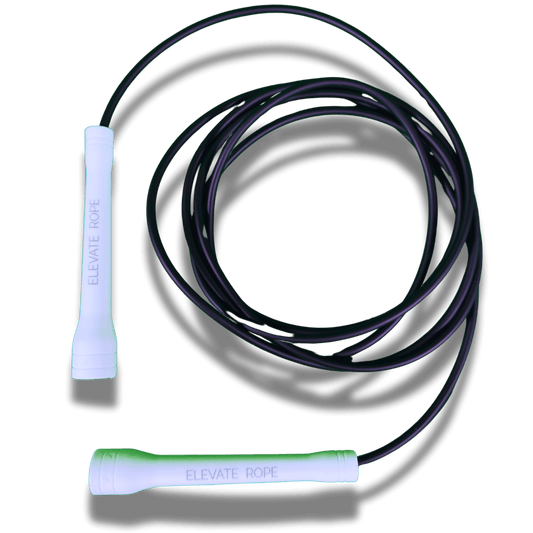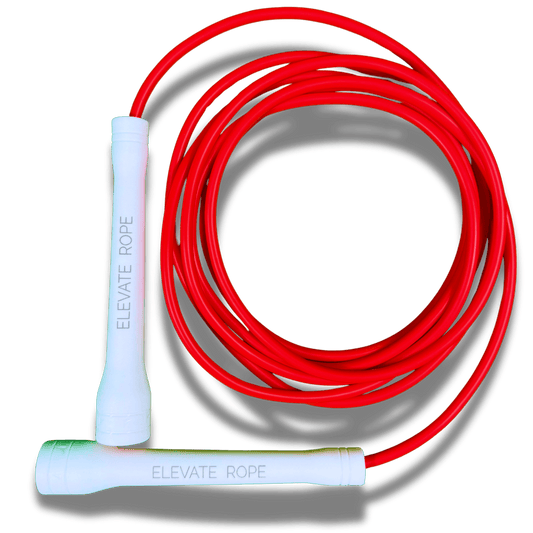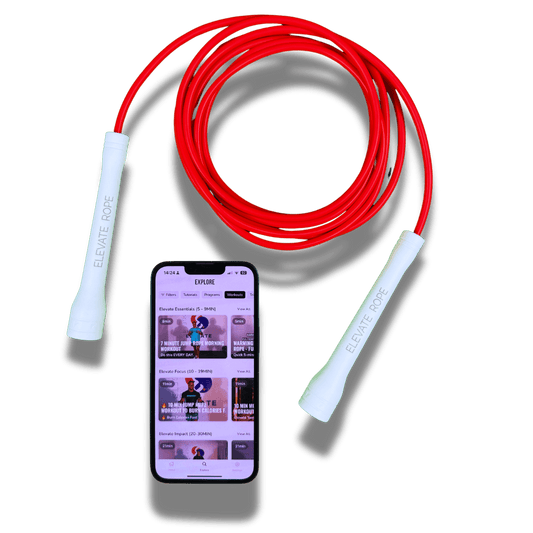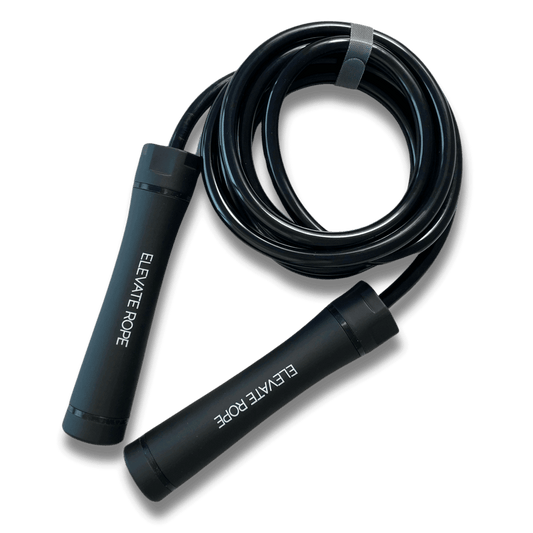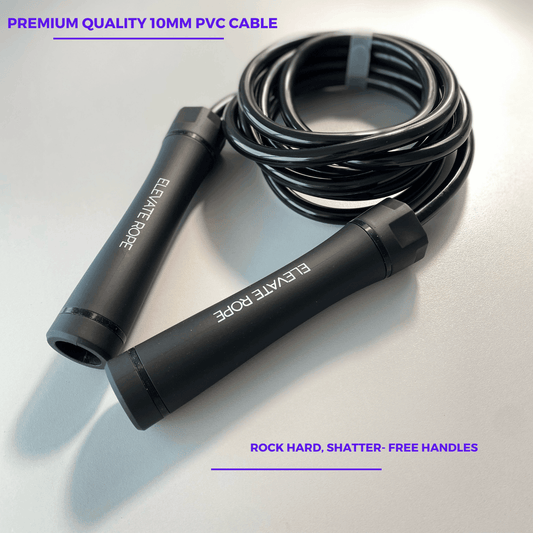When you think tennis training, you probably picture hours of drills, sprints across the baseline, and endless rallies.
But there’s one simple tool that can completely transform your movement, coordination, and control — the jump rope.
Jump rope training builds balance, rhythm, and endurance while sharpening your footwork and reaction time. It’s lightweight, portable, and one of the most effective ways to develop athletic precision.
For tennis players, that means moving quicker, reacting faster, and controlling every step — all while improving speed, timing, and stamina.
In this guide, you’ll learn how rope training enhances agility, coordination, and reaction time — plus a 15-minute tennis-specific workout you can plug straight into your weekly routine.

Why Tennis Players Should Train with a Jump Rope
Tennis is a sport of rhythm, speed, and precision. You’re constantly stopping, starting, jumping, and changing direction — often within seconds.
Jump rope training directly targets every one of those demands, helping you move lighter, faster, and with more control.
1. Agility and Footwork
Each jump strengthens your lower body and sharpens the neuromuscular control that keeps your feet quick and responsive.
Faster steps mean better positioning — and better shots.
2. Coordination and Timing
Every swing, serve, and volley depends on precise timing. The rhythm of rope training enhances the connection between your eyes, hands, and feet, creating smoother movement patterns across the court.
3. Balance and Stability
Landing from each jump builds control and joint strength through your ankles, knees, and core — essential for safe landings and quick recoveries.
4. Endurance and Conditioning
Rope intervals raise your heart rate fast, training your cardiovascular system for longer rallies and tie-break pressure without losing power or focus.
5. Reaction and Rhythm
The tempo of jumping teaches rhythm, helping you stay fluid and reactive — especially under pressure.
According to research published in the Journal of Sports Science & Medicine, jump rope training improves lower-limb stiffness and reactive strength — two critical components of speed and agility for tennis players.
How Jump Rope Builds Tennis Speed and Agility
Every great tennis player knows the secret to winning points isn’t just power — it’s movement efficiency.
Jump rope drills condition your body to store and release energy faster through the stretch-shortening cycle.
This means your muscles and tendons act like springs — absorbing force on impact and releasing it explosively during take-off.
Here’s what happens when you train with a rope:
- Elastic Strength: Repetitive jumping strengthens the Achilles tendon and calf complex for more bounce and quicker acceleration.
- Core Coordination: Each rotation demands upright posture and stable alignment, reinforcing control during volleys and serves.
- Ground Reaction Speed: Training to jump lightly reduces foot contact time — key for lightning-fast transitions and recovery steps.
Unlike heavy plyometrics, rope training builds explosiveness with less joint stress, making it ideal for both in-season conditioning and off-court athletic work.

Rope Drills for Court Movement
Footwork wins matches.
The faster you can react, recover, and reset, the more control you’ll have during play.
The following drills improve agility, coordination, and balance while challenging your stamina.
1. Side-to-Side Skips (45 sec)
Simulates lateral court movement for defensive slides and recovery.
2. Single-Leg Hops (30 sec each leg)
Strengthens stabilizers and improves control for single-leg take-offs and landings.
3. High-Knee Runs (30 sec)
Boosts foot turnover speed and cardio endurance for chasing down shots.
4. Side Swings + Jump (20 reps)
Develops upper-lower body rhythm — perfect for serve-and-volley coordination.
5. Double Unders (15–20 reps)
Builds explosiveness and timing for vertical jumps and quick reactions.
Coach’s Tip: Stay light on your feet — you should feel quick and springy, not heavy.
The focus isn’t on jumping higher; it’s on maintaining rhythm and control.
These drills can fit into warm-ups, practice breaks, or full conditioning sessions.
Just 10 minutes, two to three times a week, can noticeably elevate your game.
🕒 15-Minute Tennis Jump Rope Routine
Consistency beats intensity.
You don’t need long workouts — just focused movement that targets agility and coordination.
Try this 15-minute circuit three to four times a week.
Warm-Up (3 minutes)
- Basic bounce jump – 1 min
- Side-to-side hops – 1 min
- Alternating single-leg hops – 1 min
Main Circuit (9 minutes)
Perform 3 rounds, 30 seconds on / 15 seconds rest:
- High-Knee Runs
- Side-to-Side Skips
- Double Unders
- Side Swings + Jump
Finisher (3 minutes)
Tabata intervals — 20 seconds fast jumps / 10 seconds rest × 6 rounds
Cool-Down (2 minutes)
Calf stretch, hip flexor mobility, deep breathing reset
This compact session builds the endurance of a long rally, the speed of footwork drills, and the control of plyometrics — all with one tool.

How to Integrate Rope Work into Tennis Practice
The best training blends naturally with your practice routine.
Here’s how to fit jump rope sessions without overloading your schedule:
- Pre-Practice Activation (5–7 minutes): Light rope work to wake up your legs and coordination.
- Post-Practice Conditioning (10 minutes): End sessions with rope intervals to simulate match fatigue.
- Off-Day Cardio (15 minutes): Swap your steady-state run for rope training to build stamina and speed with less impact.
Pro Tips for Success
- Keep posture tall — shoulders relaxed, elbows close to your body.
- Rotate from your wrists, not your shoulders.
- Jump low — 1–2 cm is all you need.
- Train barefoot occasionally to build foot strength and balance.
- Track progress — jumps per minute, duration, or endurance level.
Stay patient and consistent — rope training rewards discipline.
Soon you’ll notice quicker reactions, smoother movement, and effortless court coverage.
The Right Gear to Elevate Your Training
Performance begins with the right equipment.
Not all ropes are created equal — tennis-specific conditioning requires precision, speed, and durability.
Look for a rope that’s:
- Fast – smooth ball-bearing rotation for clean rhythm.
- Durable – built for high-speed training indoors or outdoors.
- Adjustable – tailored perfectly to your height and movement.
That’s why elite athletes choose the Ascent MAX Rope — engineered for precision, speed, and endurance.
Its 5MM PVC cable provides just the right feedback for footwork, timing, and rhythm-based conditioning.
🔥 Ready to Step Up Your Game?
🎾 Get Ascent MAX — Save €20
Train like a tennis athlete and feel the difference in every step, swing, and sprint.
For complete support, explore the Elevate Athlete Training Bundles — built to boost speed, endurance, and balance with progressive rope systems designed for your sport.
Final Takeaway: Elevate Your Game
Tennis rewards players who move with control — who react faster, recover smoother, and stay sharp when it counts.
Jump rope training strengthens each of those abilities while keeping workouts simple, fun, and efficient.
Every skip builds coordination.
Every rhythm builds confidence.
Every session builds the foundation for your best performance yet.
Start small, stay consistent, and you’ll feel it — quicker steps, smoother transitions, stronger rallies.
So grab your rope, step on the court, and elevate your game one skip at a time.
🎯 Train smart. Move fast. Play better.
